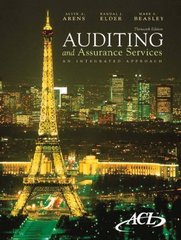Question
Suppose you have been hired as a financial consultant to Defense Electronics, Inc (DET), a large publicly traded firm that is the market share leader
Suppose you have been hired as a financial consultant to Defense Electronics, Inc (DET), a large publicly traded firm that is the market share leader in radar detection systems (RDSs). The company is looking at setting up a manufacturing plant to produce a new line of RDSs. This will be a five-year project. The company bought some land three years ago for $4.5 million in anticipation of using it as a toxic dump site for waste chemicals, but it built a piping system to safely discard the chemicals instead. The land was appraised last week for $5.3 million. In five years, the after tax value of the land will be $5.7 million, but the company expects to keep the land for future project. The company wants to build its new manufacturing plant on this land; the plant and equipment will cost $32 million to build. The following market data DEI's securities are current:
Debt: 230,000 7.2 percent coupon bonds outstanding, 25 years to maturity, selling for 108 percent of par; the bonds have a $1,000 par value each and make semiannual payments.
Common stock: 8,800,000 shares outstanding, selling for $71 per share: the beta is 1.1.
Preferred stock: 450,000 shares of 5.0 percent preferred stock outstanding, selling for $81 per share
Market: 7 percent expected market risk premium: 5 percent risk-free rate.
DEI uses HSOB as its lead underwriter. HSOB charges DET spreads of 8 percent on new common stock issues, 6 percent on new preferred stock issues and 4 percent on new debt issues. HSOB included all direct and indirect issuance costs (along with its profit) in selling these spreads. HSOB has recommended to DEI that it raise the funds needed to build the plant by issuing new shares of common stock. DET's tax rate is 35 percent. The project requires $1,300,000 in initial net working capital investment to get operational. Assume HSOB raises all equity for new projects externally.
What is the NPV? Can you explain to me what the NPV is, and how to calculate it?
The cash flows at the end of year 5 are 20,875,000
The present value of future cash flows is 12,450,000
That is what I understood from the some other chegg answers
Step by Step Solution
There are 3 Steps involved in it
Step: 1

Get Instant Access to Expert-Tailored Solutions
See step-by-step solutions with expert insights and AI powered tools for academic success
Step: 2

Step: 3

Ace Your Homework with AI
Get the answers you need in no time with our AI-driven, step-by-step assistance
Get Started


